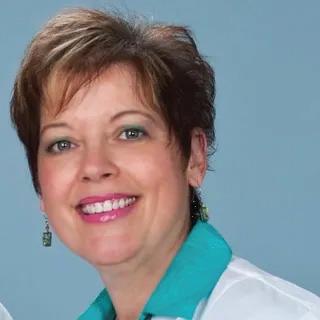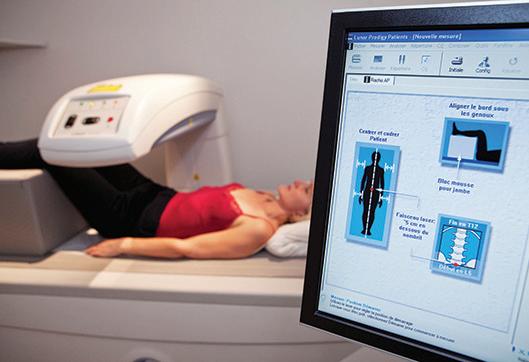
3 minute read
Embracing Life
motherapy, radiation, clinical trials, medication and novel treatments. A variety of cancers presented: breast, colon, lung, lymphoma, nonHodgkin’s (follicular) lymphoma and prostate. I constantly think about how I can help them, comfort them and share what I know from my breast cancer experience. Some are coming to the end of their cancer treatment journey, but some have a long way to go.
supporting others in treatment.
This year, my medical team again suggested that I share my posttreatment experiences as a service to readers after two years as a survivor. As I said, I didn’t think I had much to share until…
My friends, four men and five women in the throes of cancer diagnoses, are now in various treatment programs that include surgery, che-
On the bright side, I also know more than nine friends who are fellow cancer survivors. We earn that title at various points along the journey and as defined by medical specialists in the cancer world. The defi nition of a cancer survivor is quite fuzzy and loose. Some say a person is considered a survivor from the moment of diagnoses. For me, that would be since June 2020, when I was diagnosed with an invasive ductal, triple negative (aggressive), HER 2, stage I carcinoma of the right breast.
My oncology surgeon, Dr. Roberta Lilly, considers me a survivor from the date of the lumpectomy that she successfully performed in July

4190 Evergreen Road, Oxford, MD
Sited on 121 acres with over 2000’ of shoreline on the Choptank River and Island Creek, this spectacular property offers a 6BR/5BA coastal home, tidal pond, gunite swimming pool, protected pier with 3.5 MLW, and amazing views from almost every room. Minutes to historic Oxford!

Offered at $5,250,000

Embracing Life
2020. The American Cancer Society uses the term cancer survivor to refer to “anyone who has ever been diagnosed with cancer no matter where they are in the course of their disease.” This would mean that my newly diagnosed friends are survivors, too.
I considered myself a survivor after my last treatment, radiation, in January 2021. Therefore, I am calling this story my two-year survivor story. Having survived surgery, chemo and radiation makes me feel like a SURVIVOR, a WARRIOR. My post-treatment exams and testing have shown me to be cancer free for now. Call me BLESSED, too!

I have been advised that I have a 95% chance of survival for five years if there is no recurrence or new cancer. At five years out, I can be called not just in remission, not just a survivor, but CURED!
Someone once said that a survivor is a person who perseveres despite hardship or danger. I was lucky to have an excellent medical team and many other cancer survivors to coach me throughout my treatment journey. My friends, whether newly diagnosed, newly in treatment, new survivors, will have me and their team of supporters to carry them forward, too.
So, what happened in this second year of survival? There is more to share. First, the good news. I con- tinue to get stronger, my blood test results are finally normal and my hair has grown back to its former length. Hooray!
In other heartening news, the University of Maryland Shore Regional Health (UMSRH) asked me to share my breast cancer journey via a video interview last summer. A team from UM Medical System (MS), Baltimore, set up their equipment at our home. I was a bit nervous. It was my first such experience. But John reminded me that the purpose of the interview was to share my pink journey in order to inform and educate. So, I wrapped my head around that and relaxed a bit for the interview.
The resulting video was posted on the UMSRH and UMMS Facebook pages and on YouTube. The interview detailed my treatment experiences, the terrific UM medical teams and staying positive while moving forward.
A few lingering bumps in the road persist. I have found specialists to help with some post-treatment physical anomalies. Both chemo and radiation caused weakness and fatigue, which has led to less muscle strength, stamina and endurance. After all, the chemo killed not only cancer cells but healthy cells in all major systems, which caused brain fog, awful GI issues, mouth sores, hair loss, etc. The radiation may have exacerbated changes in bone density.


Embracing Life cal team ordered a screening for osteoporosis. The common test is a type of low-level x-ray called a bone density test or DEXA scan. I had been screened, as recommended, every three years after age 50, and those scans were available for comparison. Osteopenia, the precursor to osteoporosis, was identified in my previous scans and in my postchemo, pre-radiation screen. This is when the bones are determined to be weaker than normal but are not yet prone to breakage.
Let’s begin with bone loss. Osteopenia and osteoporosis are bone conditions that affect almost 20% of women over 50. According to the Mayo Clinic and the Centers for Disease Control, osteoporosis is a condition in which the bones become weak and brittle and are more likely to break.
The body constantly absorbs and replaces bone tissue. With osteoporosis, new bone creation doesn’t keep up with old bone removal. More than 3 million cases are diagnosed in the U.S. each year. Treatment can help, but it can’t be cured.
Between my chemotherapy and radiation treatments, my medi -

Post-radiation, another scan revealed that the osteopenia had worsened in just two months to osteoporosis, possibly caused by radiation. All testing was done at the UMSRH Diagnostic Center in Easton, MD.
After my astute family practitioner, Shirley Seward, CRNP, saw the test results, she sent me to a local













